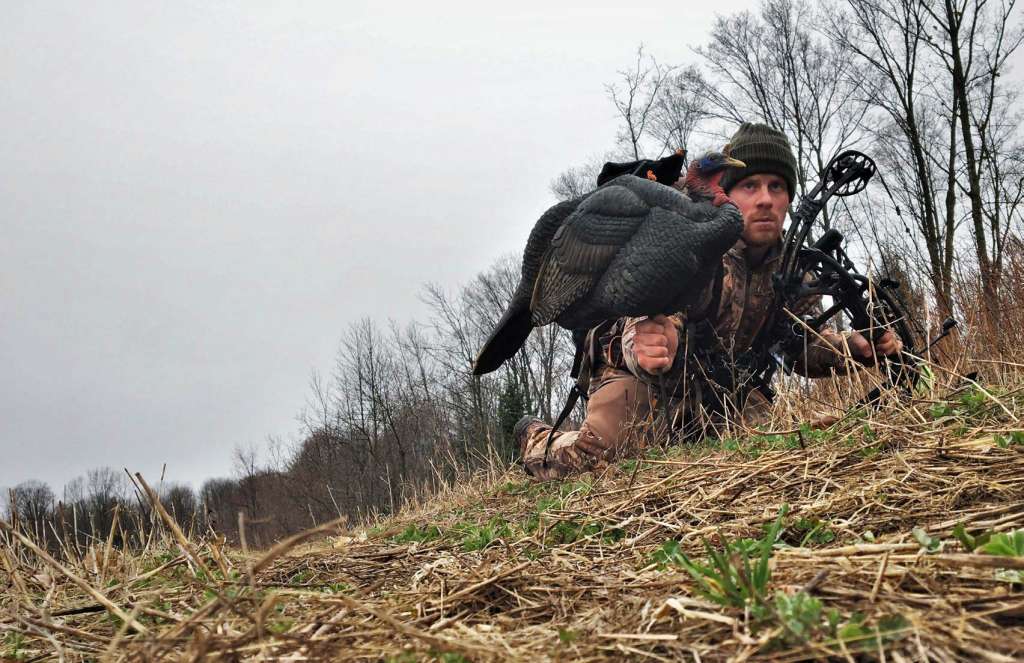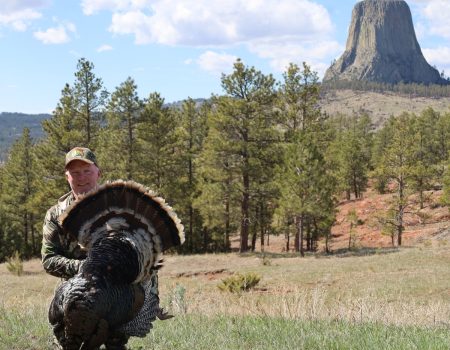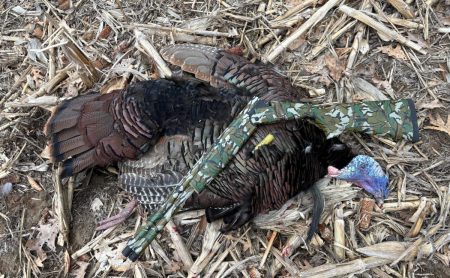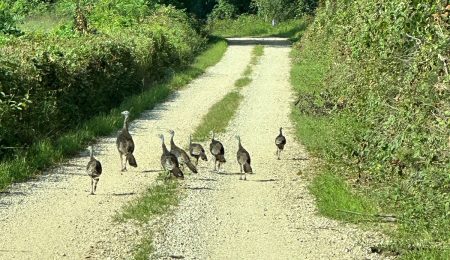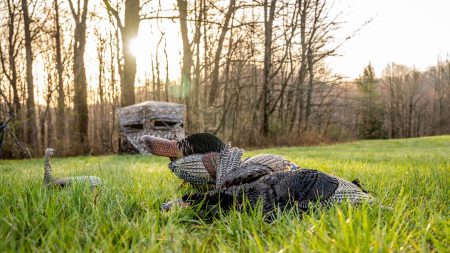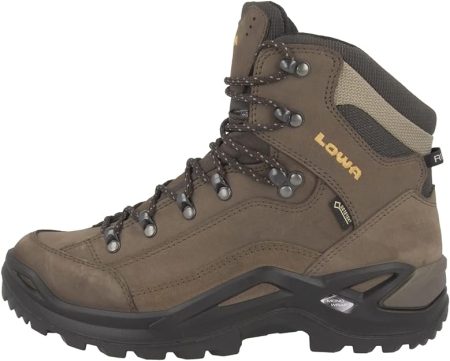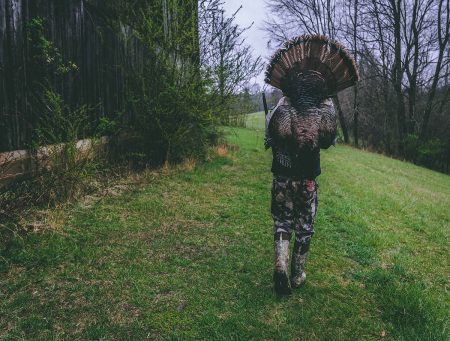If you’ve been taking the sure approach of shotgun hunting for spring gobblers, add a whole new realm of excitement by carrying your bow this spring.
A firearm certainly gives you greater control of a hunting situation, and that rings especially true when hunting turkeys. If a tom pokes his face within range, maybe even through some brush, he’s made a lethal mistake. No one can rightfully deny the peace of mind in knowing that a swarm of dense shot gives you a relatively large margin to work with. In some cases, even a flinched 50-yard shot can yield a lights-out ending due to a wide shot pattern.
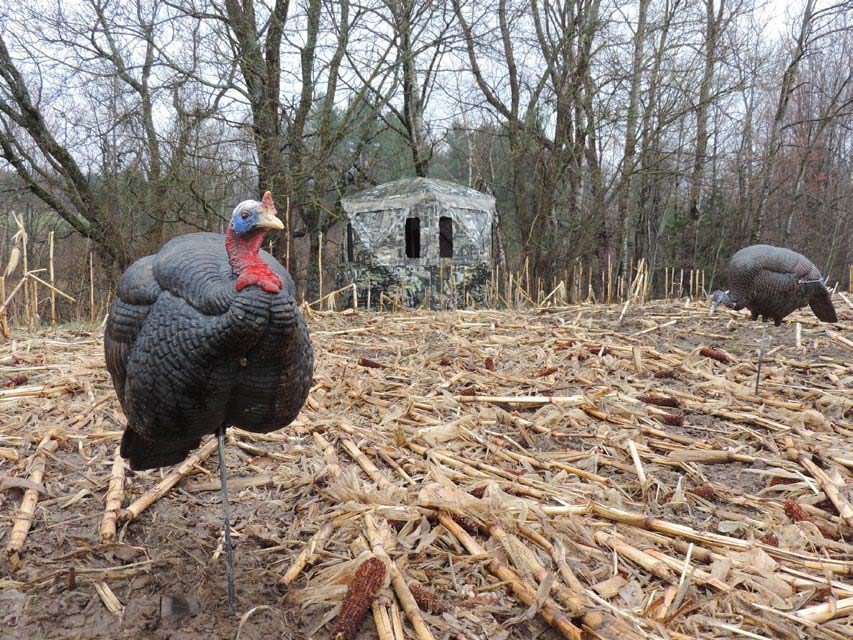
Switching to archery gear adds a whole new level of difficulty. You’ll need a clear shot and a still-standing target. Most of all, you’ll need the bird to be much, much closer in order for the shot to be considered ethical. Understand: Those points aren’t negatives. Sure, you’ll work harder in most instances to get said opportunity, but you’ll also have a far more thrilling hunt. Imagine a gobbling bird within 15 yards! In my opinion, the only thing that beats it is a bugling bull elk.
If you’re ready to start bowhunting spring gobblers, following are some tips from 18 years of turkey hunting with a bow that will help taper your learning curve. I’ve arrowed dozens of toms using these tips, and you can, too.
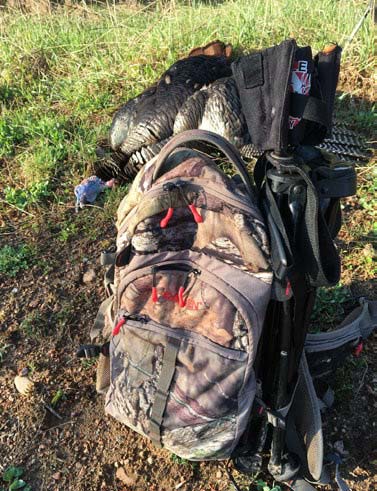
Draw Them Close
The most exciting aspect of bowhunting turkeys is that, to kill them consistently, they must be very close. The lion’s share of my bow-killed birds fell to well-placed shots within 15 yards. When a bird gobbles, spits and drums within 15 yards, it’ll surely be an adrenaline-filled encounter. Granted, pulling toms within 15 yards can be challenging, especially if you hunt ground where birds get pressured. So, let’s consider our options to get that toppin shot.
Setting Up
When I first started bowhunting turkeys, I exclusively did so from a Double Bull ground blind. It had positives and negatives. The positives are being able to setup anywhere, including the middle of a field or clearing, and being able to draw your bow undetected as a bird approaches the setup. In general, a ground blind is great when hunting in areas you’ve scouted before your hunt.
When I’ve patterned birds that do the same thing daily — especially in farm country — I want to be in the exact location they’re frequenting shortly after floating down from their roosts. I can do that with a ground blind. Unlike deer, turkeys (unless they’ve been majorly educated) will virtually ignore a ground blind placed in the wide open, especially with realistic decoys placed 10 to 15 yards away. I’ve arrowed many gobblers this way.
If turkeys are using a large field daily but aren’t necessarily frequenting an exact spot, I opt for the highest point in the field and set my blind there. This makes my decoys most visible, and for whatever reason, turkeys are prone to approach decoys uphill from them. Contrarily, I’ve never had a gobbler come downhill to decoys.
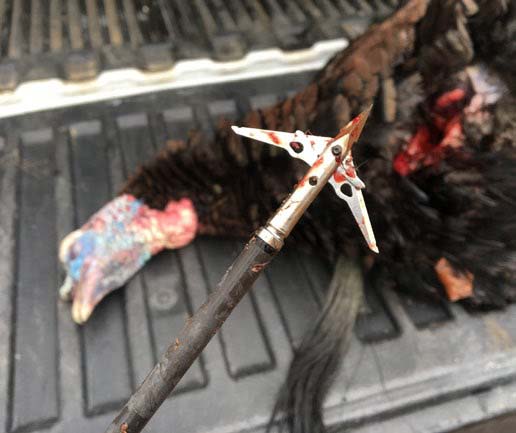
When I don’t have the option to scout before I hunt, I lighten the load and leave the ground blind in my truck. I dress in camo from head to toe, pack a folding saw in case I need to create a quick branch blind, and strike out onto the property with my bow and decoys. I’ve killed more than a dozen spring gobblers with this highly effective approach. The positives are that you can reach a bird and setup faster and with less commotion — sometimes I simply back up against a tree to break my outline. You can also make plays on birds like you would with a shotgun due to the reduced cumber of no ground blind. The negative is that calling and drawing your bow can be difficult — no blind to hide your movements.
Once I hear a gobbler, I move in as close as I dare without exposing myself, then setup where toms approaching my decoys will move behind trees or other obstructions so I can draw my bow undetected. I place my decoys 15 yards away. I call almost exclusively with a mouth call to eliminate movements.
Again, if my first setup falls flat, I’m not tied to that location. I move to subsequent setups and try to make something happen. It works very well for me, and I find that I hunt fewer hours and kill more birds that I do when hunting from a blind. It’s also a great accomplishment.
Gear for Turkeys
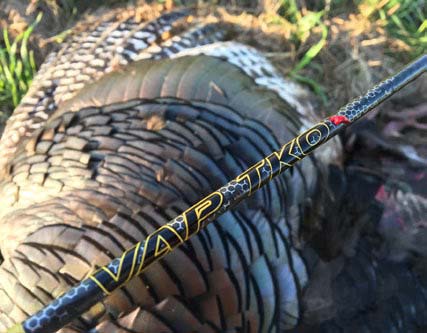
If I had to choose between using cheap decoys with great camo or using Goodwill camo with expensive, realistic decoys, I’ll choose option B. I used cheap decoys when I first started turkey hunting, and I pulled very few toms within spitting distance. I just couldn’t get toms to consistently commit.
I switched to Dave Smith Decoys more than 10 years ago, and they’ve paid for themselves many times over because I hunt fewer hours and kill way more birds. I haven’t done the exact math, but I’d say eight out of 10 toms respond to them. What’s more, they fixate so intently on these plastics that I can draw back undetected, sometimes even without obstructions (think field edges) to cover my movements. I usually use a hen and a jake, but I’ve also killed birds by using a single hen or jake. Configuration seems to be less important than placement. Decoys, bar none, must be highly visible to have the greatest allure.
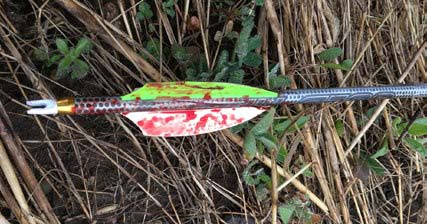
likely see on a regular basis.
While sitting against a tree is a viable option, I prefer the comfort of a portable folding chair. It also keeps my bow cam above dirt and vegetation while shooting, plus it keeps my legs and butt from going numb like they do when I sit directly on the ground.
If you choose to hunt from a blind, consider it an investment. Cheap blinds don’t last, and they can be noisy to setup. Buy a blind made from quality materials, take good care of it, and it will last you decades. Rods might break occasionally, but that’s an easy, inexpensive maintenance fix. I have two Primos Double Bull blinds — the Darkhorse and SurroundView 270 — and both are very effective for deer and turkey hunting.
Finally, if I had to choose only one call, I’d go for a raspy mouth call from Zink or Woodhaven. A mouth call, when mastered, sounds more realistic than any pot or box call. Further, it reduces movements. Heck, you can even use it hands free while at full draw.
Broadhead Selection

The exact bow setup you use for deer hunting will work well on turkeys. Some folks reduce their draw weight, which is fine, but I don’t. I don’t want to reconfigure sight pins or sight tapes after turkey season, so I use the same setup for turkeys that I do for deer.
Broadheads are another story. A tiny broadhead placed through a bird’s lungs will do the trick every time, but the lungs are so minutely sized that even the best archers cannot hit them every single time during a hunting situation. Your worst nightmare is arrowing a bird and watching him fly to parts unknown. And that’s entirely possible if you miss the mark even narrowly.
Thus, I suggest using large mechanical broadheads even if you hunt deer with fixed-blade heads. The additional cutting diameter will often compensate if a marginal hit is made (Understand: I don’t use that as an excuse to attempt low-odds shots.). Second, the shock a large mechanical broadhead unloads on the bird upon impact is astounding. That, combined with the large cutting surface, will help anchor a bird fast. I’ve personally shot birds with both fixed-blade and mechanical heads, but I’ve shot dozens more with mechanicals. I’ve seen the performance — regardless if the hit is perfect or marginal — and I’ll put my money on them.
Slow Down and Make It Count
In the past, I’ve rushed numerous shots on gobblers that I would’ve had several minutes to aim at and shoot had I settled down and took my time. A boss tom pummeling your jake decoy 15 yards away is exciting business. It creates a sense of urgency to shoot quickly.
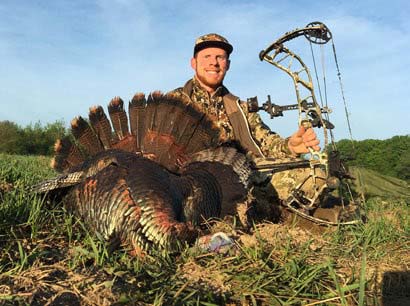
Today, I’ve learned to manage those anxious feelings. I make sure that the tom is standing still. I also make sure that I study and know the angle at which he’s standing. A tom locked on the decoys will generally provide a few minutes for you to determine these things, although it probably won’t take you that long. I’m just trying to exaggerate my point that you can usually take more time than you think to make your shot count.
It would surprise you to know how many turkeys are missed or hit marginally at 15 yards and in. A strutting tom is mostly feathers, so if you don’t know the anatomy and how to place your arrow according to the angle, that strutter becomes a perplexing target that’s easy to miss.
Study online anatomy diagrams before and during your hunt. Even with 18 seasons under my belt, I still annually study anatomy diagrams to refresh my memory. When an opportunity presents itself, SLOW DOWN and try to visualize that anatomy diagram. Don’t just aim for the center of the bird and hope for the best. Choose an exact feather and focus on nothing but that feather. Trust me, rushed shots will lead to lost birds. Do your part to avoid floating feathers and a spotty blood trail.
Go with the Bow
There’s a level of fear that comes with trading in your shotgun for a bow in the turkey woods. It makes things more involved and certainly increases the challenge. But, the intensity of succeeding with a bow and the rush that comes from encountering a gobbler at point-blank range is thrilling. Once you experience it, I bet you’ll be anxious to do it every spring.
by Darron McDougal
(Photos © by Darron McDougal)
Per our affiliate disclosure, we may earn revenue from the products available on this page. To learn more about how we test gear, click here.






